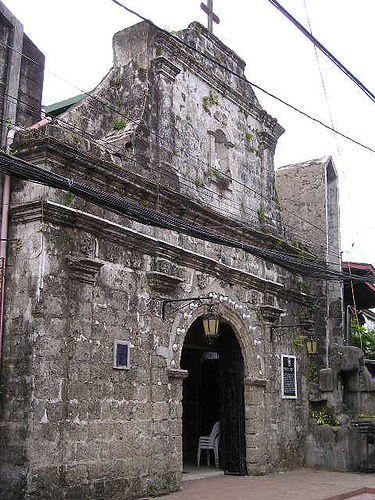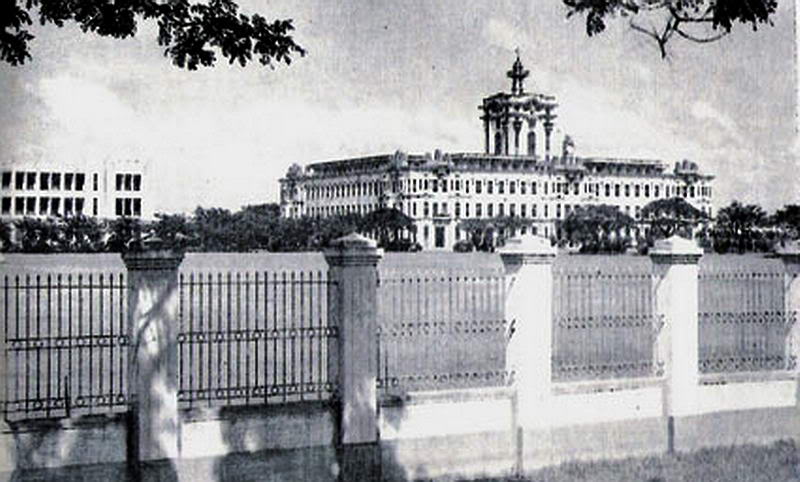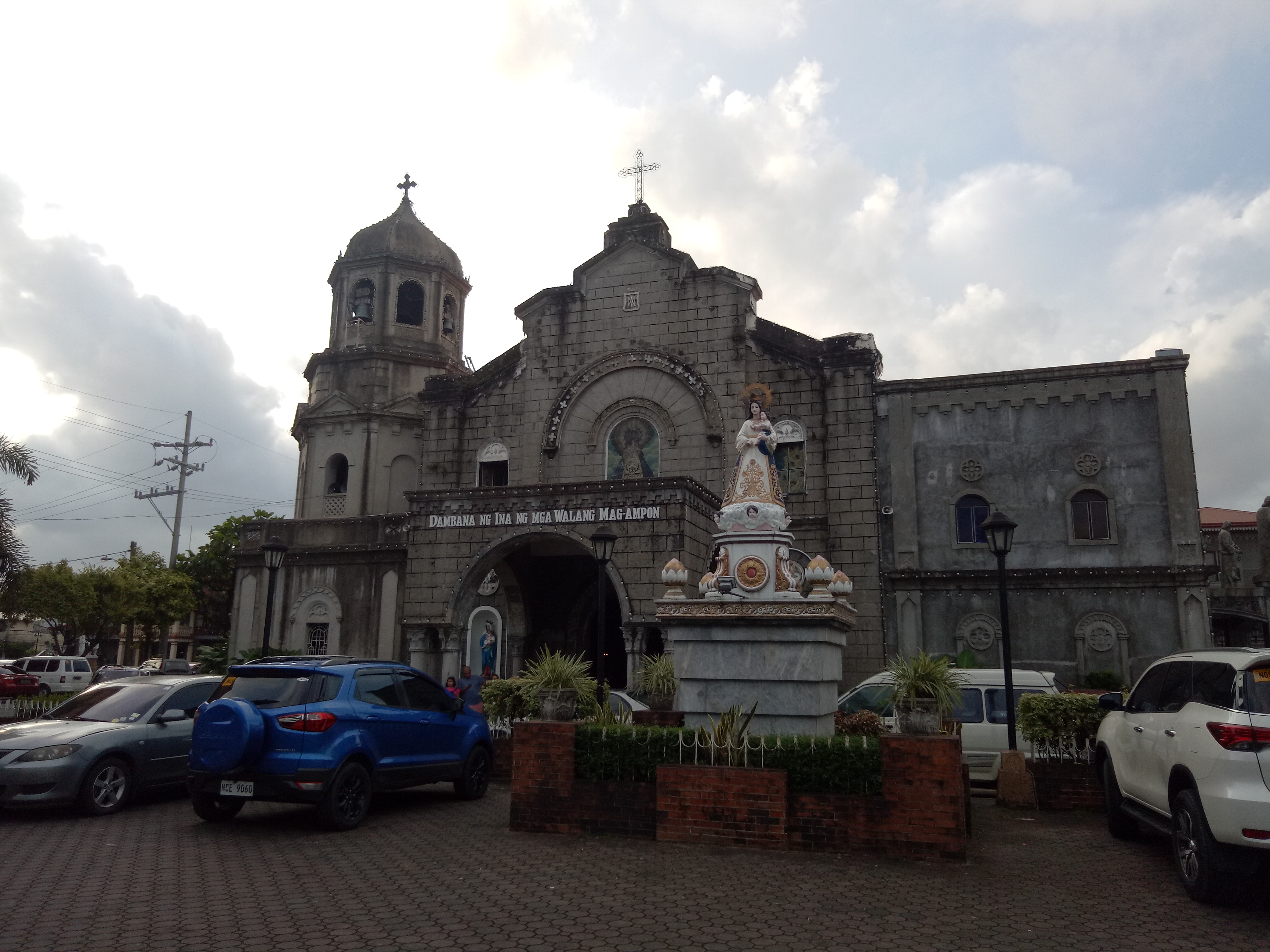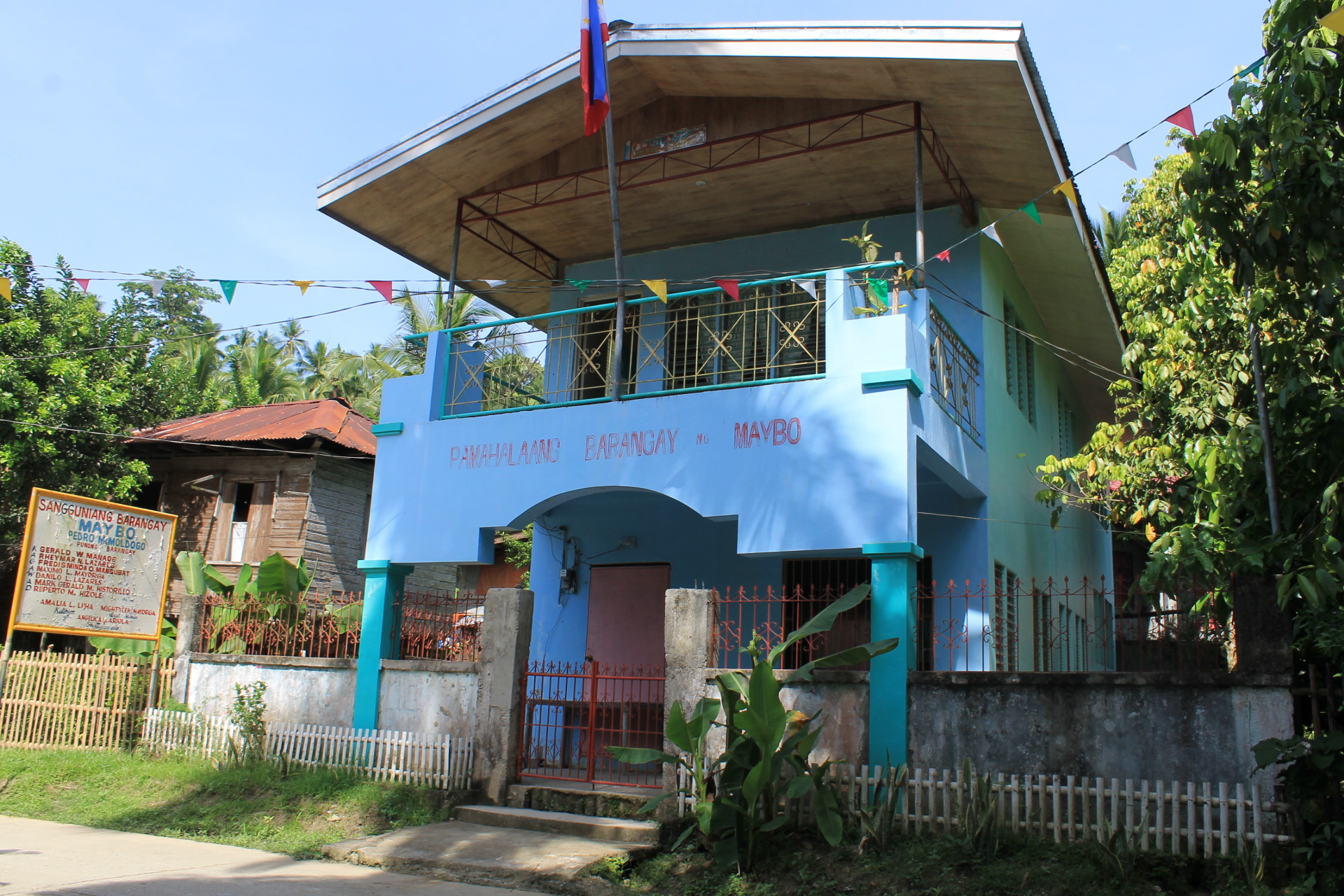|
Santa Elena, Marikina
Santa Elena is a barangay of Marikina, Philippines. According to the 2010 census, it has a population of 6,954 people. Bordered by San Roque and Jesus Dela Peña, Sta. Elena is said to be one of the first towns established by the Augustinians in what was known as the Marikina Valley and home for the heritage sites such as the Our Lady of the Abandoned Parish and the Kapitan Moy Residence. History Records have shown that the barrio has traced its beginning in the year 1687, when the Jesuit missionaries crossed the river from Jesus dela Peña, in search for a place to build a new church. According to a legend, the barrio got its name when the people saw a huge cross floating down the Marikina River. Many people dove into the water to get it ashore, but failed to do so. They then decided to build a chapel in honor of the mysterious cross. At first, the cross stood alone, but later the image of Sta. Elena appeared beside it. The last renovation for the chapel was done in 1945. ... [...More Info...] [...Related Items...] OR: [Wikipedia] [Google] [Baidu] |
Barangay
A barangay (; abbreviated as Brgy. or Bgy.), historically referred to as barrio (abbreviated as Bo.), is the smallest administrative division in the Philippines and is the native Filipino term for a village, district, or ward. In metropolitan areas, the term often refers to an inner city neighborhood, a suburb, or a suburban neighborhood or even a borough. The word ''barangay'' originated from ''balangay'', a type of boat used by a group of Austronesian peoples when they migrated to the Philippines. Municipalities and cities in the Philippines are politically subdivided into barangays, with the exception of the municipalities of Adams in Ilocos Norte and Kalayaan in Palawan, with each containing a single barangay. Barangays are sometimes informally subdivided into smaller areas called ''purok'' ( en, "wikt:zone, zone"), or barangay zones consisting of a cluster of houses for organizational purposes, and ''sitios'', which are territorial enclaves—usually rural—far from t ... [...More Info...] [...Related Items...] OR: [Wikipedia] [Google] [Baidu] |
Marikina Valley
Marikina (), officially the City of Marikina ( fil, Lungsod ng Marikina), is a 1st class highly urbanized city in the National Capital Region of the Philippines. According to the 2020 census, it has a population of 456,159 people. It is located along the eastern border of Metro Manila, Marikina is the main gateway of Metro Manila to Rizal and Quezon provinces through Marikina–Infanta Highway. It is bordered on the west by Quezon City, to the south by Pasig and Cainta, to the north by San Mateo, and to the east by Antipolo, the capital of Rizal province. It was founded by the Jesuits on the fertile Marikina Valley in 1630. Marikina was the provincial capital of the Province of Manila under the First Philippine Republic from 1898 to 1899 during the Philippine Revolution. Following the onset of American occupation it was then organized as a municipality of Rizal Province, prior to the formation of Metro Manila in 1975. Formerly a rural settlement, Marikina is now primarily ... [...More Info...] [...Related Items...] OR: [Wikipedia] [Google] [Baidu] |
University Of Santo Tomas
The University of Santo Tomas (also known as UST and officially as the Pontifical and Royal University of Santo Tomas, Manila) is a private, Catholic research university in Manila, Philippines. Founded on April 28, 1611, by Spanish friar Miguel de Benavides, third Archbishop of Manila, it has the oldest extant university charter in the Philippines and in Asia, and is one of the world's largest Catholic universities in terms of enrollment found on one campus. It is the main campus of the University of Santo Tomas System that is run by the Order of Preachers. UST was granted the title “Royal” by King Charles III of Spain in 1785. Pope Leo XIII made UST a "Pontifical" university in 1902. Pope Pius XII bestowed upon UST the title of “The Catholic University of the Philippines” in 1947. UST houses the first and oldest engineering, law, medical, and pharmacy schools in the country. The main campus is the largest university in the city of Manila and is home to 22 degree-gran ... [...More Info...] [...Related Items...] OR: [Wikipedia] [Google] [Baidu] |
Kapitan Moy Portrait
Capitan and Kapitan are equivalents of the English Captain in other European languages. Capitan, Capitano, and Kapitan may also refer to: Places in the United States * Capitan, Louisiana, an unincorporated community *Capitan, New Mexico, a village *Capitan Mountains, New Mexico People *George Kapitan, who wrote for Timely in the Golden Age of Comic Books. *Tomis Kapitan, an American philosopher and Distinguished Teaching Professor Emeritus at Northern Illinois University. Arts and entertainment *''Der Kapitän'' or ''The Captain'' (film), a 1971 German comedy * ''Der Kapitän'' (TV series), a German series *''Le Capitan'', a novel by Michel Zevaco Other uses *Kapitän, a shortened version of several ranks in the German navy *Kapitan, another name for Opperhoofd, a Dutch colonial governor *Opel Kapitän, a luxury car manufactured from 1938 to 1970 *Capitan (tequila), a brand of tequila produced by Barton Brands *Capitan Records, a record label set up by US musician Chris Brokaw ... [...More Info...] [...Related Items...] OR: [Wikipedia] [Google] [Baidu] |
Marikina River
The Marikina River ( tl, Ilog Marikina) is a river in eastern Metro Manila, Philippines. It is the largest tributary of the Pasig River, with headwaters located in the Sierra Madre Mountains in Rodriguez, Rizal province. The Marikina River used to be an important transport route during the Spanish colonial era, but its importance as a transport route diminished when the Philippines' national highway system became more established. The resulting lack of river boat traffic and the deforestation of the upland areas in what is now the Upper Marikina River Basin Protected Landscape contributed to the river's siltation, further reducing its value as a transport route. Due to negligence and industrial development, the river has become very polluted, an act which recent Marikina administrations have attempted to address. The Marikina River system In the Pamitinan Protected Landscape located in Sitio Wawa, Brgy. San Rafael, in Rodriguez, the Marikina River is dammed by Wawa Dam, ... [...More Info...] [...Related Items...] OR: [Wikipedia] [Google] [Baidu] |
Capitan Venciong House
Capitan and Kapitan are equivalents of the English Captain in other European languages. Capitan, Capitano, and Kapitan may also refer to: Places in the United States * Capitan, Louisiana, an unincorporated community *Capitan, New Mexico, a village *Capitan Mountains, New Mexico People *George Kapitan, who wrote for Timely in the Golden Age of Comic Books. *Tomis Kapitan, an American philosopher and Distinguished Teaching Professor Emeritus at Northern Illinois University. Arts and entertainment *''Der Kapitän'' or ''The Captain'' (film), a 1971 German comedy * ''Der Kapitän'' (TV series), a German series *''Le Capitan'', a novel by Michel Zevaco Other uses *Kapitän, a shortened version of several ranks in the German navy *Kapitan, another name for Opperhoofd, a Dutch colonial governor *Opel Kapitän, a luxury car manufactured from 1938 to 1970 *Capitan (tequila), a brand of tequila produced by Barton Brands *Capitan Records, a record label set up by US musician Chris Brokaw ... [...More Info...] [...Related Items...] OR: [Wikipedia] [Google] [Baidu] |
Kapitan Moy Residence
Kapitan Moy Building, situated in Marikina, Metro Manila, the Philippines, is the 200-year-old house of Don Laureano Guevarra (4 July 1851 – 30 December 1891), known as the founder of the Marikina shoe industry. Also known as ''Kapitan Moy'', he served as ''capitan municipal'' in the former municipality. A historical marker honoring him as the "Pioneer of the Shoe-making Industry in Marikina" was installed at his birthplace in 1970. Presently, there are two restaurants found in the ground floor of the Kapitan Moy Building and these are Café Kapitan Restaurant and Kusina ni Kambal. At the Café Kapitan Restaurant is an old well which serves as a décor and a wishing well to customers. History Don Laureano "Kapitan Moy" Guevara Guevara was the fifth child of businessman Jose Emiterio Guevara of Quiapo, Manila and Timotea Mariquita Andres. His father established the shop named ''La Industrial'' in Escolta, Manila—a bazaar, printing prist lithography shop, and firearms dealer ro ... [...More Info...] [...Related Items...] OR: [Wikipedia] [Google] [Baidu] |
Our Lady Of The Abandoned Parish
The Diocesan Shrine and Parish of Our Lady of the Abandoned (Spanish: ''Santuario y Parroquia de Nuestra Señora de los Desamparados''; Tagalog: ''Dambanang Pandiyosesis at Parokya ng Ina ng mga Walang Mag-Ampon''), better known as Our Lady of the Abandoned Parish Church, is a Roman Catholic church in Marikina, the Philippines. The church enshrines one of several images of the Madonna and Child venerated as miraculous, which has received a Pontifical decree of coronation. The church itself is a testament of a religious controversy rooting back from Marikina's early history wherein both the Jesuits and Augustinians fought over the ecclesiastical control of the area. The church is also known for featuring Metro Manila's longest Holy Week procession with around 83 floats as of 2019, and the third overall after the St. Augustine Parish in the Town of Baliuag and the San Isidro Labrador Parish in the Town of Pulilan, both located in the province of Bulacan and featuring at least ... [...More Info...] [...Related Items...] OR: [Wikipedia] [Google] [Baidu] |
Augustinians
Augustinians are members of Christian religious orders that follow the Rule of Saint Augustine, written in about 400 AD by Augustine of Hippo. There are two distinct types of Augustinians in Catholic religious orders dating back to the 12th–13th centuries: * Various congregations of Canons Regular also follow the Rule of Saint Augustine, embrace the evangelical counsels and lead a semi-monastic life, while remaining committed to pastoral care appropriate to their primary vocation as priests. They generally form one large community which might serve parishes in the vicinity, and are organized into autonomous congregations. * Several orders of friars who live a mixed religious life of contemplation and apostolic ministry. The largest and most familiar is the Order of Saint Augustine (OSA), founded in 1244 and originally known as the Hermits of Saint Augustine (OESA). They are commonly known as the Austin Friars in England. Two other orders, the Order of Augustinian Recollects a ... [...More Info...] [...Related Items...] OR: [Wikipedia] [Google] [Baidu] |
Philippines
The Philippines (; fil, Pilipinas, links=no), officially the Republic of the Philippines ( fil, Republika ng Pilipinas, links=no), * bik, Republika kan Filipinas * ceb, Republika sa Pilipinas * cbk, República de Filipinas * hil, Republika sang Filipinas * ibg, Republika nat Filipinas * ilo, Republika ti Filipinas * ivv, Republika nu Filipinas * pam, Republika ning Filipinas * krj, Republika kang Pilipinas * mdh, Republika nu Pilipinas * mrw, Republika a Pilipinas * pag, Republika na Filipinas * xsb, Republika nin Pilipinas * sgd, Republika nan Pilipinas * tgl, Republika ng Pilipinas * tsg, Republika sin Pilipinas * war, Republika han Pilipinas * yka, Republika si Pilipinas In the recognized optional languages of the Philippines: * es, República de las Filipinas * ar, جمهورية الفلبين, Jumhūriyyat al-Filibbīn is an archipelagic country in Southeast Asia. It is situated in the western Pacific Ocean and consists of around 7,641 islands t ... [...More Info...] [...Related Items...] OR: [Wikipedia] [Google] [Baidu] |
Barangays Of Marikina
A barangay (; abbreviated as Brgy. or Bgy.), historically referred to as barrio (abbreviated as Bo.), is the smallest administrative division in the Philippines and is the native Filipino term for a village, district, or ward. In metropolitan areas, the term often refers to an inner city neighborhood, a suburb, or a suburban neighborhood or even a borough. The word ''barangay'' originated from ''balangay'', a type of boat used by a group of Austronesian peoples when they migrated to the Philippines. Municipalities and cities in the Philippines are politically subdivided into barangays, with the exception of the municipalities of Adams in Ilocos Norte and Kalayaan in Palawan, with each containing a single barangay. Barangays are sometimes informally subdivided into smaller areas called ''purok'' ( en, "zone"), or barangay zones consisting of a cluster of houses for organizational purposes, and ''sitios'', which are territorial enclaves—usually rural—far from the barangay c ... [...More Info...] [...Related Items...] OR: [Wikipedia] [Google] [Baidu] |







